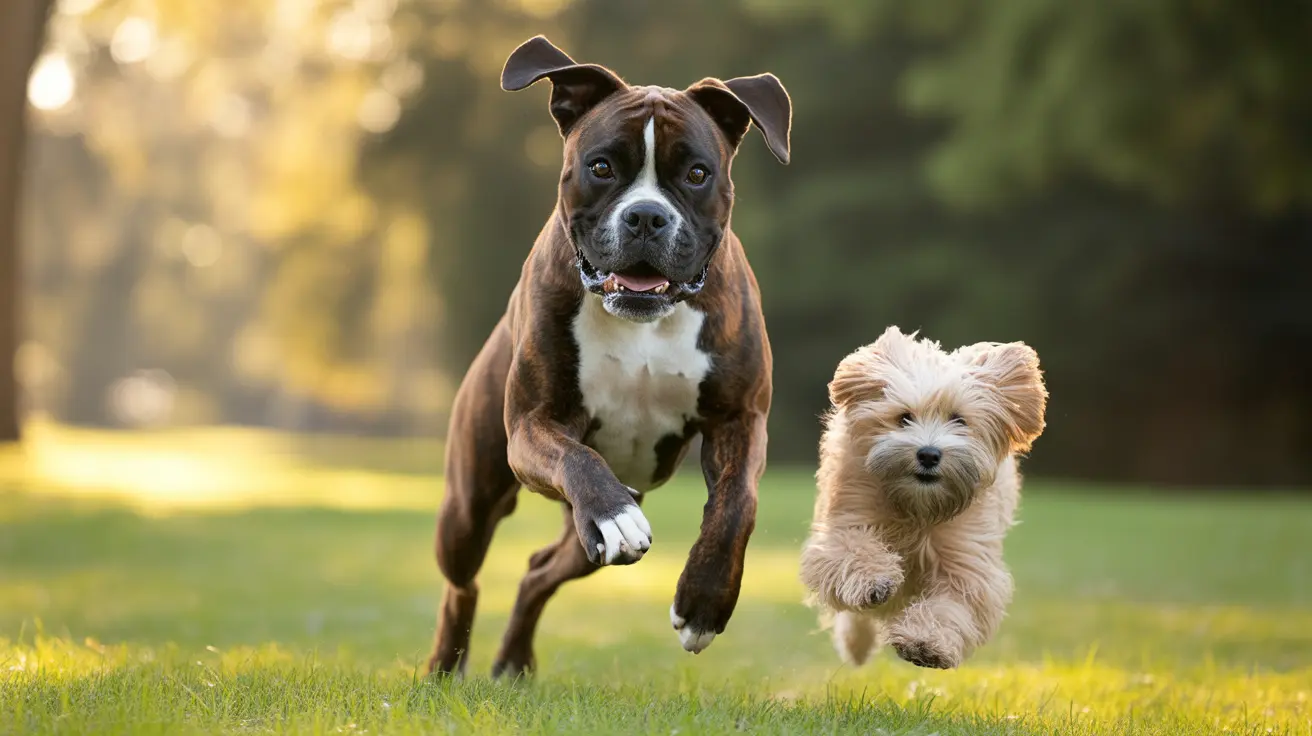Dog Training Session Length and Frequency: The Complete Guide to Optimizing Your Training Schedule
Finding the right balance for dog training session length and frequency is one of the most important factors in achieving successful, long-lasting results with your canine companion. Whether you're working with an energetic puppy or refining skills with an adult dog, understanding how to structure your training schedule can make the difference between a well-behaved pet and ongoing behavioral challenges.
The timing, duration, and frequency of training sessions directly impact your dog's ability to learn, retain information, and maintain enthusiasm for training. Dogs learn continuously throughout the day, making it crucial to approach training as both structured sessions and integrated daily practice. This comprehensive guide will help you develop an effective training schedule tailored to your dog's specific needs, age, and energy levels.
Understanding Age-Specific Training Requirements
Puppy Training Sessions (8-16 Weeks)
Puppies are remarkably quick learners, but their short attention spans require carefully structured training sessions. During the critical socialization period from 8 to 16 weeks, puppies undergo rapid brain development, making this the optimal time for establishing foundational behaviors and positive associations with training.
For puppies, training sessions should be extremely brief—typically lasting only 3-5 minutes per session. Their brains are highly receptive to learning, but they tire rapidly both mentally and physically. The focus during this stage should be on relationship building and creating structure to establish trust, which makes future training significantly easier.
Basic impulse control training, such as teaching "sit," should begin as early as eight weeks using positive reinforcement methods. Puppies during this stage should learn essential behaviors including polite play, understanding "no biting," housetraining fundamentals, being alone for short periods, and reliable recall before reaching six months of age.
Adolescent Dogs (6-14 Months)
Adolescence presents unique challenges as dogs experience hormonal changes and may exhibit poor listening skills and reduced impulse control. During this phase, training sessions can gradually extend to 10-15 minutes, but the focus should shift to channeling energy productively and reinforcing previously learned behaviors in increasingly distracting environments.
This stage requires particular patience as dogs may seem to "forget" previously mastered commands. Consistent, ongoing training in various environments becomes vital to help adolescent dogs navigate this challenging developmental period successfully.
Adult and Senior Dogs (1+ Years)
Adult dogs possess longer attention spans and can handle extended training sessions, sometimes lasting an hour or more depending on the complexity of the tasks and the dog's individual temperament. However, these longer sessions should always include breaks and varied activities to prevent mental fatigue and maintain engagement.
Senior dogs (7+ years) benefit from continued training focused on mental stimulation and low-impact activities that keep their minds active while accommodating any physical limitations that may develop with age.
Optimal Training Frequency Guidelines
Daily Training Principles
Training frequency should ideally occur daily, even if only brief sessions are possible. Dogs learn continuously throughout the day, making consistent daily practice more effective than longer, infrequent sessions. This approach helps reinforce learned behaviors and prevents the regression that can occur with sporadic training schedules.
For puppies, multiple short sessions throughout the day work best—typically 3-4 brief sessions lasting 3-5 minutes each. Adult dogs can manage 1-2 longer sessions daily, ranging from 15-30 minutes, depending on their energy levels and the training objectives.
The Five Best Training Times
Effective training timing follows a dog's natural energy cycles and daily routines. The most productive training periods include:
- Morning sessions before elimination, eating, and exploration when dogs are alert and motivated
- Spontaneous moments when dogs naturally exhibit desirable behaviors that can be captured and reinforced
- Before providing life rewards such as meals, walks, or playtime
- Immediately following unwanted behaviors to redirect and teach appropriate alternatives
- During "witching hours" (late afternoon to early evening) when dogs experience natural energy bursts
Session Duration Guidelines by Training Goals
Basic Obedience Training
For fundamental commands like sit, stay, come, and loose leash walking, sessions should focus on quality over quantity. Puppies require 3-5 minute sessions, while adult dogs can handle 15-20 minutes of focused obedience work. The key is ending each session while the dog remains enthusiastic and engaged.
Specialized Skills and Complex Behaviors
More complex training objectives, such as advanced tricks or specialized working behaviors, may require longer sessions for adult dogs—sometimes extending to 45-60 minutes. However, these extended sessions must include frequent breaks, play periods, and variety to prevent mental fatigue and maintain motivation.
Behavior Modification
Addressing behavioral issues often requires shorter, more frequent sessions to avoid overwhelming the dog and creating negative associations with training. Sessions focusing on behavior modification typically work best at 10-15 minutes, conducted multiple times throughout the day in various contexts.
Recognizing Training Session Limits
Signs of Mental Fatigue
Understanding when to end a training session is crucial for maintaining positive associations with learning. Dogs exhibit several indicators when they're reaching their mental limits:
- Decreased response to familiar commands
- Increased distraction or difficulty focusing
- Repetitive behaviors like excessive yawning or lip licking
- Loss of enthusiasm or reluctance to participate
- Increased mistakes with previously mastered behaviors
Training should never become repetitive or stressful. Sessions must include breaks and play to maintain motivation and reduce stress levels. The goal is always to end while the dog remains engaged and eager for future training opportunities.
Integrating Training with Daily Routines
Feeding Schedule Considerations
Never conduct training sessions immediately after a dog has eaten, as this can create health risks including bloat and reduces the dog's motivation and alertness. Schedule formal training sessions at least 2-3 hours after meals, or use training as a pre-meal activity when dogs are naturally more motivated by food rewards.
Consider incorporating training into feeding routines by asking for basic commands before meal service, making everyday activities opportunities for reinforcement and practice.
Continuous Learning Opportunities
Dogs learn continuously throughout the day, making consistency and exemplary behavior outside formal training sessions crucial for optimal results. Practice recall during safe outdoor activities, reinforce polite greeting behaviors when guests arrive, and maintain loose leash walking standards during regular walks.
This integrated approach transforms daily interactions into training opportunities, strengthening the dog-owner relationship while maintaining and refining learned behaviors consistently.
Breed and Individual Considerations
Tailoring Sessions to Breed Characteristics
Different breeds have varying attention spans, energy levels, and learning styles that should influence training session structure. High-energy working breeds may require longer sessions with more physical activity incorporated, while toy breeds might benefit from shorter, more frequent sessions that accommodate their smaller size and different energy patterns.
Individual Temperament Adaptations
Each dog is unique, and successful training requires adapting session length and frequency to individual temperaments. Some dogs thrive with consistent, structured sessions, while others respond better to varied, spontaneous training opportunities integrated throughout their daily routines.
Monitor your dog's individual responses and adjust accordingly. Factors such as age, health status, previous training experience, and personality all influence optimal session parameters.
Advanced Training Strategies
Incorporating Play and Rest Periods
Effective longer training sessions require strategic incorporation of play and rest periods to maintain engagement and prevent mental fatigue. Structure extended sessions with 5-10 minutes of focused training followed by brief play breaks, creating a rhythm that keeps dogs motivated while maximizing learning retention.
Progressive Session Extensions
As dogs mature and develop better focus, gradually extend session durations while monitoring for signs of fatigue or decreased engagement. This progressive approach allows dogs to build mental stamina while maintaining positive associations with training activities.
Troubleshooting Common Scheduling Issues
Managing Busy Schedules
When time constraints limit formal training opportunities, focus on integrating brief training moments throughout daily routines. Even 2-3 minutes of focused practice during regular activities can maintain progress and reinforce learned behaviors effectively.
Addressing Seasonal and Environmental Factors
Weather conditions, daylight changes, and seasonal factors can impact optimal training times. Adapt schedules to work with environmental conditions while maintaining consistency in frequency and approach.
Frequently Asked Questions
How long should I train my puppy each day?
Puppies should receive multiple short training sessions throughout the day, totaling 15-20 minutes of formal training. Structure this as 3-4 sessions lasting 3-5 minutes each, focusing on basic commands and socialization during the critical 8-16 week period.
Can I train my dog for an hour straight?
Adult dogs can handle longer sessions, potentially up to an hour, but only with frequent breaks, variety in activities, and careful monitoring for signs of fatigue. Always include play periods and rest breaks to maintain engagement and prevent mental exhaustion.
What happens if I skip training for several days?
Inconsistent training can lead to regression in learned behaviors, especially with puppies and newly trained dogs. While occasional breaks won't ruin progress, daily practice—even just a few minutes—is significantly more effective than sporadic longer sessions.
Should training sessions be the same length every day?
Session length can vary based on your dog's energy level, the training objectives, and available time. The key is maintaining daily consistency rather than identical session durations. Adapt length based on your dog's engagement and response on any given day.
How do I know if my training sessions are too long?
Signs that sessions are too lengthy include decreased response to commands, increased distraction, loss of enthusiasm, excessive yawning or stress signals, and increased mistakes with familiar behaviors. End sessions while your dog is still engaged and eager.
Is it better to train before or after walks?
Training before walks can be highly effective as dogs are motivated and alert. However, avoid training immediately after meals. For high-energy dogs, a brief walk to release excess energy before training can improve focus, while using walks as rewards after training sessions can increase motivation.
Can older dogs handle the same training frequency as puppies?
Senior dogs benefit from continued training but may require shorter sessions and lower-intensity activities. Adjust frequency and duration based on the individual dog's physical capabilities and energy levels, focusing on mental stimulation appropriate for their age and health status.
Conclusion
Successful dog training depends heavily on finding the optimal balance of session length and frequency tailored to your dog's specific needs, age, and development stage. Remember that training is a lifelong process that evolves as your dog matures, requiring ongoing adjustments to maintain effectiveness and engagement.
The foundation of effective training lies in understanding that dogs learn continuously throughout each day, making consistency and positive reinforcement during both formal sessions and daily interactions essential for long-term success. By implementing these guidelines and remaining attentive to your dog's individual responses, you'll create a training schedule that enhances your bond while achieving lasting behavioral improvements.






